CANADA’S ENBRIDGE IS INVOKING A TREATY WITH THE UNITED STATES TO PREVENT THE CLOSURE OF THE LINE 5 OIL PIPELINE
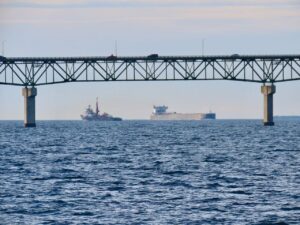 The government of Canada has formally invoked a 1977 treaty with the United States government that prevents the State of Michigan from forcing Enbridge to close its controversial Line 5 pipeline under the Straits of Mackinac. Gordon Griffin, legal counsel for the Canadian company, has notified a federal judge in Grand Rapids about this treaty in a lawsuit late last week, requesting that the litigation between Enbridge and the State of Michigan be halted while the two governments resolve the dispute. The formal request for negotiations under Article 9 of the 1977 Transit Pipeline Treaty was delivered to the United States through diplomatic channels. The treaty stipulates that “no public authority” in the United States or Canada shall take any action that may “have the effect of, impeding, diverting, redirecting, or interfering with in any way the transmission of hydrocarbons in transit,” Griffin wrote.
The government of Canada has formally invoked a 1977 treaty with the United States government that prevents the State of Michigan from forcing Enbridge to close its controversial Line 5 pipeline under the Straits of Mackinac. Gordon Griffin, legal counsel for the Canadian company, has notified a federal judge in Grand Rapids about this treaty in a lawsuit late last week, requesting that the litigation between Enbridge and the State of Michigan be halted while the two governments resolve the dispute. The formal request for negotiations under Article 9 of the 1977 Transit Pipeline Treaty was delivered to the United States through diplomatic channels. The treaty stipulates that “no public authority” in the United States or Canada shall take any action that may “have the effect of, impeding, diverting, redirecting, or interfering with in any way the transmission of hydrocarbons in transit,” Griffin wrote. Michigan Attorney General Dana Nessel (pictured right) has sued Enbridge last year to enforce Governor Gretchen Whitmer’s order to close the dual pipeline segment of Line 5 under the strait by May 12, which the company refused to do without a court order. For its part, Enbridge has sued Whitmer and the state. Enbridge wants Judge Janet Neff to rule that only the Pipeline and Hazardous Materials Safety Administration, an agency of the U.S. Department of Transportation, can
Michigan Attorney General Dana Nessel (pictured right) has sued Enbridge last year to enforce Governor Gretchen Whitmer’s order to close the dual pipeline segment of Line 5 under the strait by May 12, which the company refused to do without a court order. For its part, Enbridge has sued Whitmer and the state. Enbridge wants Judge Janet Neff to rule that only the Pipeline and Hazardous Materials Safety Administration, an agency of the U.S. Department of Transportation, can  order the pipeline closed.
order the pipeline closed. property right-of-way, which allows Enbridge to build the tunnel.
property right-of-way, which allows Enbridge to build the tunnel. judges and legal actors working on the case and widely reported by local TV news.
judges and legal actors working on the case and widely reported by local TV news.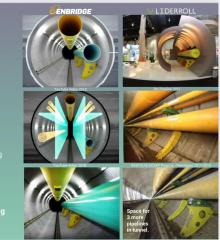 arguments of the Canadian company Enbridge to the Michigan government, since the Brazilian technology had already been tested and approved in four tunnel projects.
arguments of the Canadian company Enbridge to the Michigan government, since the Brazilian technology had already been tested and approved in four tunnel projects.With all this imbroglio, the President of Liderroll in Brazil, Paulo Fernandes, is still waiting for the final decision to start the construction of the tunnel, so that he can start manufacturing the driving rollers to be used, which have a patent guaranteed by both Canada and the United States: “Our method was exhaustively tested, approved, and internationally awarded by ASME”, he said.
“It will provide more speed and efficiency when installing the pipeline. Launching the pipeline with another technology, welding inside the tunnel, besides being practically impossible due to the toxic gases from the welds, combined with the length of the tunnel of over four miles is a method that would risk the lives of the welders and whoever was inside the tunnel for this construction. Now imagine this, in a tunnel more than 230 meters below sea level. It would be a very high risk. And in this case, the Michigan government should take every precaution because in a construction job of this level everything must work 100%. There cannot be any kind of risk and no room to try out experimental methodologies”.
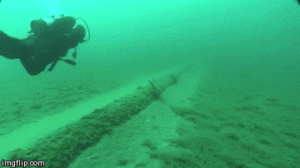 right here in Michigan. Michigan has made clear in its filings that there is no legal reason that the Court should wait to rule in our case, and this remains true, even in light of Canada’s action today.” Whitmer said Michigan and Canada would remain a “strong partner” on a number of other issues and she urged Trudeau to change course: “So long as oil is flowing through the pipelines, there is a very real threat of a catastrophic oil spill in
right here in Michigan. Michigan has made clear in its filings that there is no legal reason that the Court should wait to rule in our case, and this remains true, even in light of Canada’s action today.” Whitmer said Michigan and Canada would remain a “strong partner” on a number of other issues and she urged Trudeau to change course: “So long as oil is flowing through the pipelines, there is a very real threat of a catastrophic oil spill in  the Great Lakes. I have made clear to Enbridge that it cannot use our state-owned lakebed for these pipelines, but Enbridge has refused to stop. Moreover, rather than taking steps to diversify energy supply and ensure resilience, Canada has channeled its efforts into defending an oil company with an abysmal environmental track record.”
the Great Lakes. I have made clear to Enbridge that it cannot use our state-owned lakebed for these pipelines, but Enbridge has refused to stop. Moreover, rather than taking steps to diversify energy supply and ensure resilience, Canada has channeled its efforts into defending an oil company with an abysmal environmental track record.”  on behalf of the pipeline: “Enbridge has continued to participate in the mediation process in good faith and still is hopeful that a negotiated resolution will continue to provide consumers and industry in the region with safe, reliable energy and advance the quick construction of the tunnel at the Straits of Mackinac.”
on behalf of the pipeline: “Enbridge has continued to participate in the mediation process in good faith and still is hopeful that a negotiated resolution will continue to provide consumers and industry in the region with safe, reliable energy and advance the quick construction of the tunnel at the Straits of Mackinac.”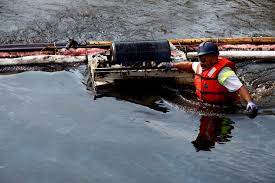 sea off the California coast last week. The Line 5 pipeline is 68 years old and runs from Superior, Wisconsin to Sarnia, Ontario through Michigan. It is an important part of Enbridge’s network, which carries light crude oil and natural gas liquids under the Straits of Mackinac. Its existence has caused increasing concern since another Enbridge pipeline caused a major oil spill in 2010 in the Kalamazoo River (pictured right), which took 4 years to clean up at a cost of over $1 billion.
sea off the California coast last week. The Line 5 pipeline is 68 years old and runs from Superior, Wisconsin to Sarnia, Ontario through Michigan. It is an important part of Enbridge’s network, which carries light crude oil and natural gas liquids under the Straits of Mackinac. Its existence has caused increasing concern since another Enbridge pipeline caused a major oil spill in 2010 in the Kalamazoo River (pictured right), which took 4 years to clean up at a cost of over $1 billion.

 publicada em 10 de outubro de 2021 às 18:00
publicada em 10 de outubro de 2021 às 18:00 






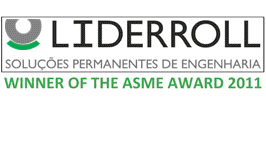





Deixe seu comentário